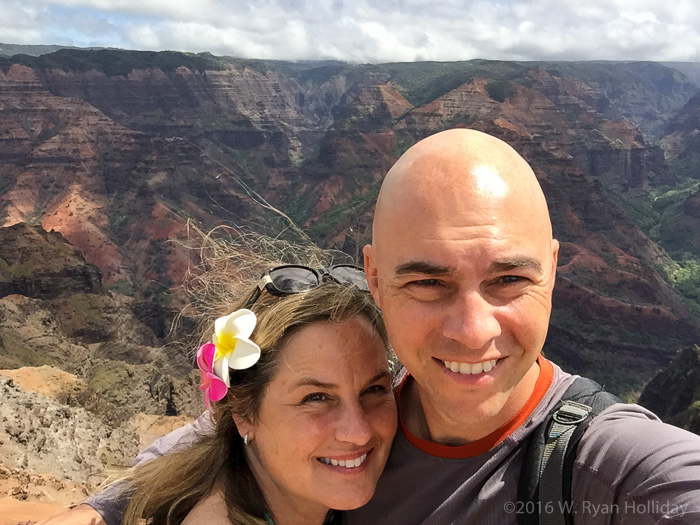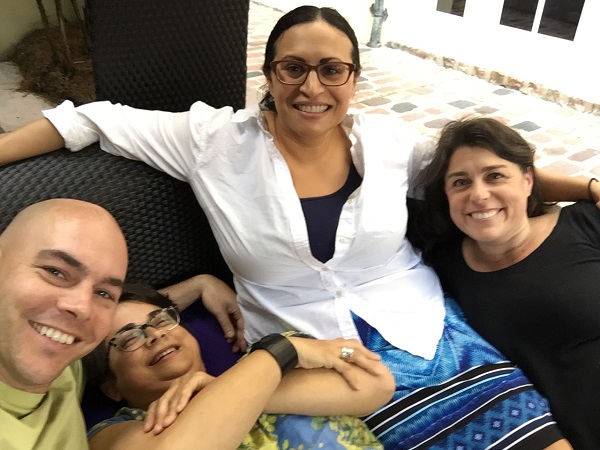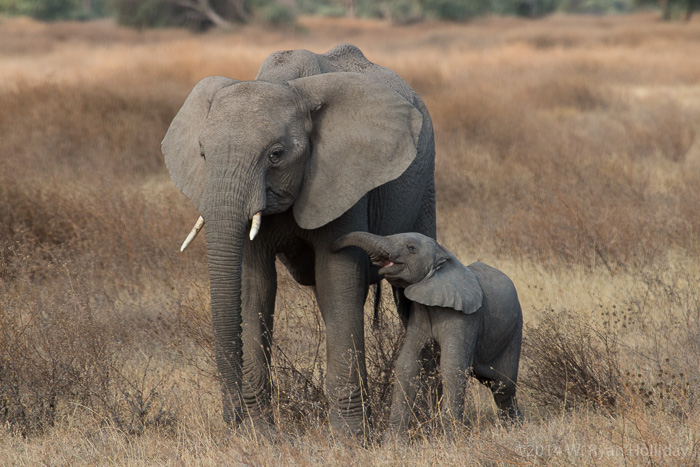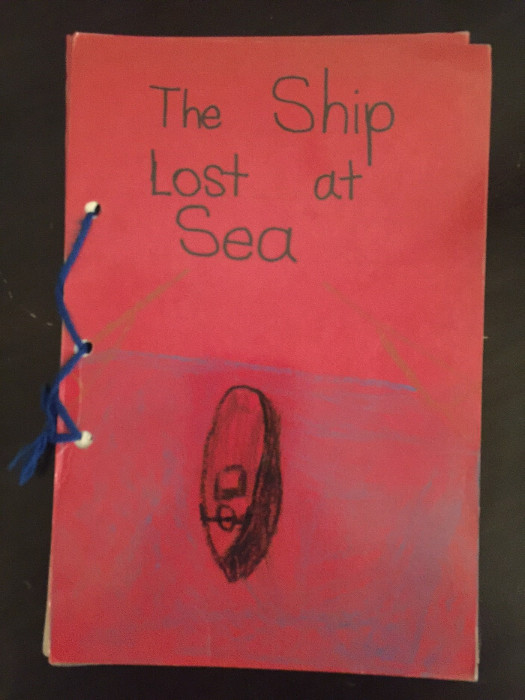Following the recap from Day 1-5, here’s the remainder of the Kauai trip:
Day 6
Aaron and I had done the seventeen mile kayak trip along the Napali Coast in 2012, a trip my dad has always wanted to do, so this year, with Aaron already having returned to California, the Elder Holliday and I signed up to do it together. It turned out our trip was the last one of the season since the waters get too rough in the winter, and we set out in the morning after a night of high swells that were supposed to decrease during the day. After a pre-dawn van trip around the island we reached the launching point in the north, and it was clear from the first moments that the swells had not subsided and that this was going to be a very different experience than 2012. After watching the first kayak in the water capsize in the waves my dad and I were the second boat to launch, and we then sat just offshore watching boat after boat get wiped out and washed back to the beach as the others tried to launch. And this was just the beginning of the trip.
After paddling along the high cliffs for a couple of miles we saw another group of kayakers turning around, finding out later that their guides had decided not to continue and eventually had to radio a boat for pickup. Despite the waves we seemed to be doing well, then out of nowhere our kayak was upside-down, and sadly my GoPro chose that moment to make an escape – apparently I had not tied it down well, so now it is off on an adventure across the Pacific (hence the lack of scuba videos from this trip). After righting our ship and continuing on we reached the first of several sea caves along the route, but while it had been a placid affair in 2012, this time the cave was being battered with waves that were tossing kayaks all over the place; after making it out safely the guides didn’t attempt to enter any of the remaining caves along the route.
Under even the worst conditions the Napali Coast is a beautiful route, and seeing green cliffs shooting thousands of feet up from the water, or watching waterfalls descend from the heights, was an impressive experience. I did my best to stop and enjoy the scenery as much as possible, but the swells hitting us from different directions meant a significant amount of mental effort went into steering, balance, and trying to stay out of the way of other kayakers – we capsized once more during the day on a water break, again catching us totally by surprise. Luckily after we made it eleven miles down the coast and stopped for lunch the route turned a corner, and after that the swells were big but generally moving in one direction, making for a much smoother trip.
…Until the landing site. The large swells that were pushing us along broke directly onto our landing beach, and with massive waves crashing onto the shore it was clear that the guides didn’t quite know what to do. The first guide took her boat in to meet a staff member on shore, but was wiped out on the way and then had to rescue her boat in the surf. Eventually word came out that we’d be going in one at a time, with the original guide treading water 100 feet offshore to offer assistance, while people on shore waited to deal with the inevitable shipwrecks.
As we watched, some boats wiped out spectacularly while others made it nearly the entire way before flipping. After what seemed like about 30 minutes, just two boats remained to go in – the second guide, and our boat. The guide told us to shadow her as we went in, so we aligned our boat with the direction of the waves and started into shore.
And then something unexpected happened. We paddled like crazy over the tops of large waves, with the staff member on shore yelling for us to stop or go depending on the size of the waves behind us. As a huge wave rolled past the staff member signalled us to paddle, and through sheer luck we caught the wave perfectly. To our right the guide’s boat capsized, but Poseidon God of the Sea lifted us up and hurled us perhaps fifty feet forward, directly onto the sand. We jumped out of the boat, pulled it up the beach, and thus ended the day in once piece and with a great story to share.
Day 7
The day after the oceans unleashed their fury was spent on land. I took Audrey up to see Waimea Canyon, and we visited the Kauai Coffee Plantation on our return before heading into town to see two of her high school friends who had relocated to the island. Afterwards Ma & Pa came over to the Hyatt to join us for drinks at sunset, followed by a twilight walk that featured fat and apparently invasive toads hopping slowly away as the Skipper chased them with his camera flash.
Day 8
And thus the great Kauai Adventure of 2016 came to an end. We enjoyed one last buffet breakfast, fed the koi for a final time, took a last trip down the resort’s lazy river (the water slide wasn’t open yet, sadly), and then headed to the airport where Audrey’s fear of babies and confined spaces collided on a completely full flight in a tight coach seat with a mother and child in the middle seat – the kid was just young enough to be a lap child, but old enough to be a strong kicker with big lungs. For my part, the inflight entertainment options included the new X-Men movie, so I had a mostly-awful film featuring superheroes and Olivia Munn’s cleavage to distract from the baby drama on my left for the six hours until we arrived safely home in Los Angeles.

The girl and me in front of a pretty canyon.








